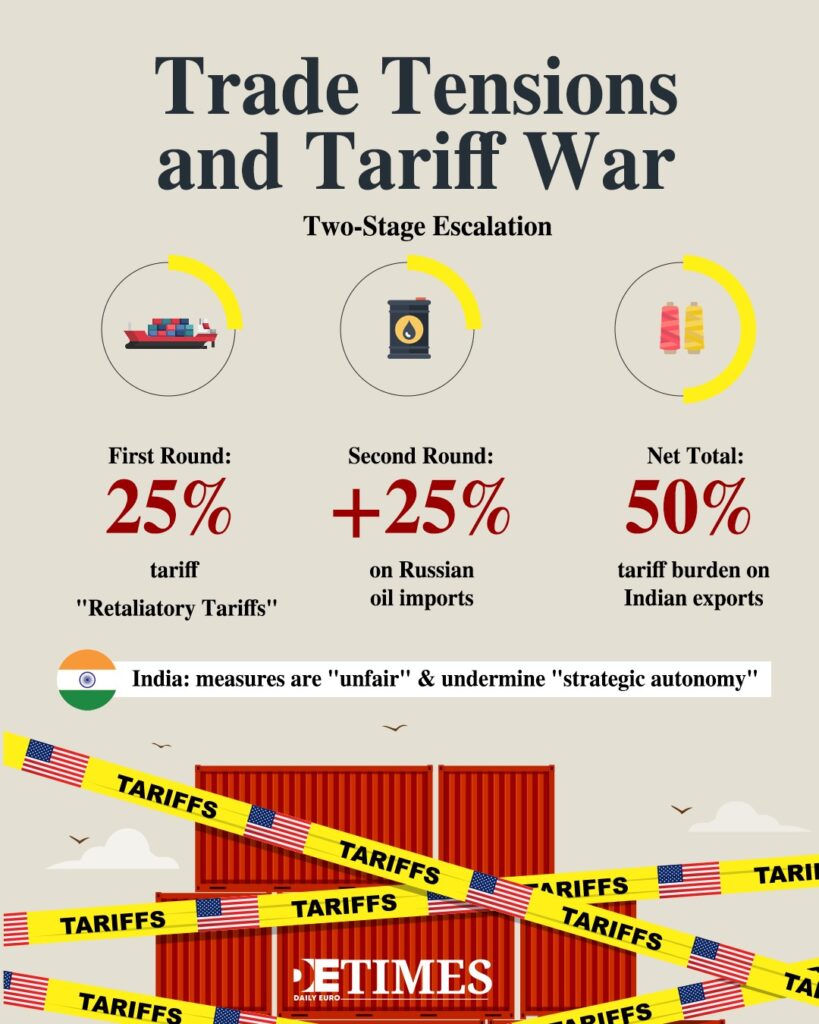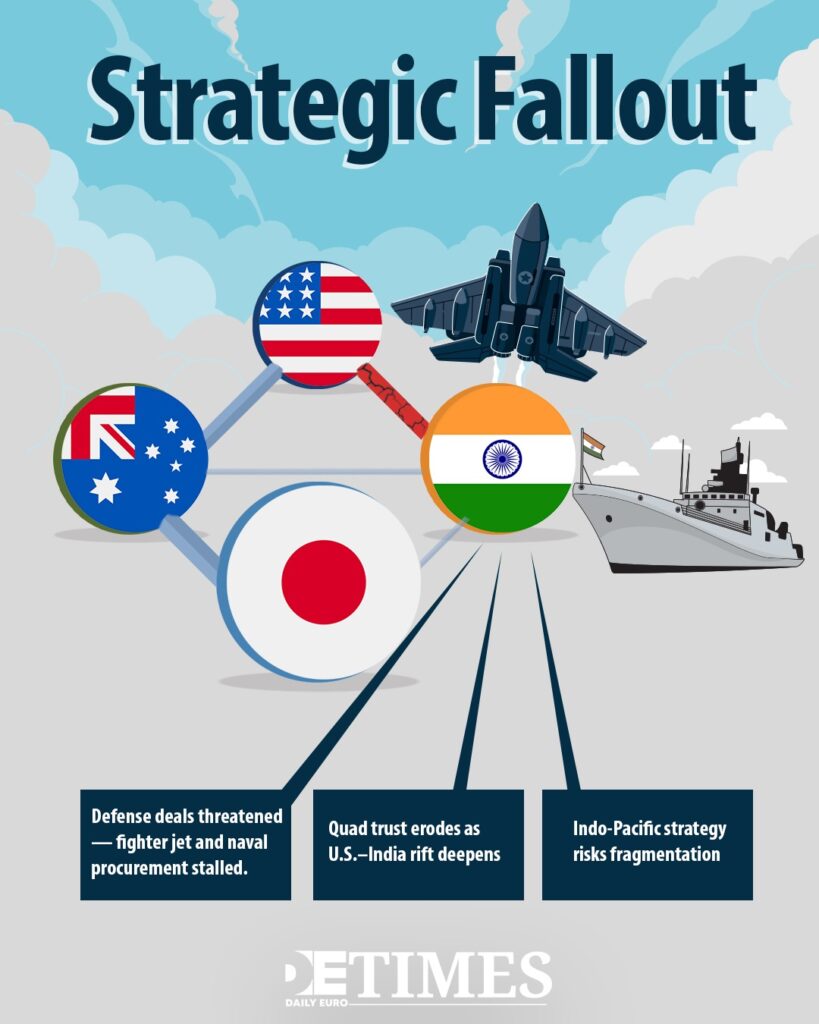Once warm, bilateral relations between the U.S. and India have tralled into a period of serious tension.
The key moment came when Prime Minister Narendra Modi declined U.S. President Donald Trump’s invitation to dinner in Washington, citing “prior commitments” and his intention to visit Odisha: the “land of Lord Jagannath.”
Modi invited Trump to visit India instead, signaling the growing diplomatic tension and reversal of power plays.
Trade Tensions and Tariff War
The symbolic rejection exposed deeper differences, particularly over trade and strategic interests.
Trump initially imposed a 25% “retaliatory” tariff, later adding another 25% over India’s purchase of Russian oil, bringing the tariffs on a key export to 50%.
India called the measures unfair and undermining of its strategic autonomy.
Geopolitics and the Role of BRICS
Experts believe the U.S. has been trying to weaken India’s ties with BRICS and limit its independence, especially as New Delhi strengthens its ties with Moscow.
Personality has also played a role: Trump has claimed to have brokered an end to hostilities with Pakistan, but India insisted it achieved the newly-found peace on its own.
Economics
Economically, the tariffs threaten years of trade cooperation, hitting textile, pharmaceutical and jewellery exports. Inside India, the opposition has accused Modi of “failing diplomatically” and failing to protect national interests.
India’s Strategic Reorientation
Strategically, the crisis threatens projects such as the Quad and military deals, while mutual mistrust could weaken cooperation in the Indo-Pacific region.
Some analysts are calling it the worst rupture in relations in two decades.
Diplomatic Independence as a Response
In response, India has placed a premium on self-sufficiency and foreign policy independence. New Delhi continues to develop energy and defense ties with Russia, whilst New Delhi strengthens partnerships outside Western alliances.

The Historic Rapprochement in the Rear View, For Now?
The tensions come as the U.S.-India relationship strengthened significantly over the past two decades, becoming a key pillar of U.S. foreign policy in Asia.
This rapprochement began with strategic agreements in the early 2000s, when Washington and New Delhi began actively cooperating on defense and counterterrorism, whilst focussing on the rise of China under Obama and Biden.
A key milestone was the signing of the U.S.-India Civil Nuclear Agreement in 2005, which paved the way for technology transfer and expanded energy cooperation.
On trade, bilateral trade has more than quadrupled, covering textiles, pharmaceuticals, IT services, and agriculture. In technology, U.S. corporations such as Google, Microsoft, and Amazon have expanded their presence in India, creating significant employment: Amazon has created up to 120, 000 (in-)direct jobs in India since setting up shop in 2013.
Joint military exercises and India’s participation in the Quad dialogue have strengthened trust between the countries. Until recently, the U.S. and India viewed each other as strategic partners capable of jointly influencing the balance of power in Asia.
Modi’s refusal to visit Washington is becoming a symbol of defiance in a once cordial partnership. Trade disputes, strategic differences, and personal mistrust are creating a crisis that could redefine the balance of power in Asia.
Restoring relations may only be possible with mutual respect, common interests, and a willingness to engage in dialogue with or without President Trump.

Read the Latest Articles on DET!
Confessions and Invisible Tragedies: Why Cheating is More Popular than Death
A New Wave of Bioethics: The Frontiers of Genetic Engineering
Malta Shuts the Door on ‘Golden Passports’: Contribution, Not Direct Investment





